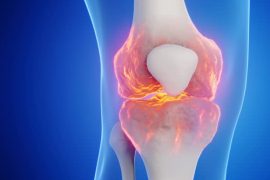Try practicing mindfulness for a moment if you’re worried about your job, finances, the state of the world, or anything else.
Resh Gupta, a postdoctoral research associate with the Mindfulness Science and Practice research cluster, said that the fundamental principle of all mindfulness practices, paying attentive attention to the present moment without passing judgment, might reduce anxiety and enhance focus.
“A lot of research has shown that mindfulness can reduce anxiety symptoms,” she stated.
Those who have incorporated mindfulness into their daily lives are familiar with its calming effects. However, researchers are still trying to figure out how it works and what kinds of mindfulness might be best for various anxiety conditions, from short-lived concern attacks to more serious, long-term clinical anxiety disorders. “We all experience anxiety, but it can manifest in many different ways,” Gupta stated. “It’s a tough problem to pin down.”
Gupta and colleagues presented a novel method for comprehending the connection between anxiety and mindfulness in research that was published in Neuroscience and Biobehavioral Reviews. They suggest that various mindfulness techniques may be beneficial for various types of anxiety rather than adopting a one-size-fits-all strategy. According to Gupta, the suggested framework should eventually aid in our comprehension of how to match anxiety sufferers with more specialized therapy.
The paper’s co-author is Todd Braver, a professor of psychology and brain sciences and the William R. Stuckenberg Professor in Human Values & Moral Development. Wendy Heller, a psychology professor at the University of Illinois Urbana-Champaign, is the other co-author. The Mindfulness Science and Practice cluster and the Arts & Sciences’ Incubator for Transdisciplinary Futures provided partial support for the project.
The latest paper, according to Braver, is representative of the kind of work the cluster is doing. “There is a growing recognition that these practices can be incredibly useful in enhancing psychological well-being,” Braver stated. However, the exact pathways through which mindfulness can have positive impacts are still unclear to us. Scientific study can be quite helpful in this situation by enabling us to more accurately pinpoint the reasons behind and methods by which particular practices work.
According to Gupta, Braver, and Heller, mindfulness reduces anxiety via enhancing cognitive control. “Cognitive control is the ability to regulate your thoughts and your actions in a way that helps you achieve your goals,” Gupta stated. “For example, if you know you have to go to the grocery store right after work, you can keep that goal in mind during the workday and turn down an offer to do something else after work.”
Gupta clarified that anxiety and mindfulness have diametrically opposed effects on cognitive control. In general, more conscious people do better on tasks that call for cognitive control. Neuroimaging studies have confirmed that mindfulness meditation can successfully alter activity in brain regions that promote cognitive control, which lends credence to that observation.
However, anxiety might make it more difficult to manage one’s thoughts. “Worry occupies a lot of space in the brain’s working memory system,” Gupta stated. “This is where your goals are stored.” The detrimental cycle of worry can be broken by employing mindfulness to enhance cognitive control, which can lessen the severity of anxiety symptoms.
Some strategies may be more effective than others, according to Gupta, depending on the kind of anxiety a person is experiencing. Focused attention is a form of mindfulness meditation that may be particularly helpful for people who worry a lot. “Focused attention teaches you to choose an anchor, such as your breath or a sound,” she stated. “Every time your thoughts stray, you keep returning them to that anchor. You’re concentrating on the experience of the present moment rather than the concern.”
A different strategy might work better for people who are overly watchful and exhibiting many of the physical signs of anxiety, such as a fast heartbeat, clammy palms, or tightness in the chest. “For this type of anxiety, a form of mindfulness meditation called open monitoring may be beneficial,” Gupta stated. “Instead of focusing on one thing, such as the breath, you can observe all internal and external experiences from moment to moment in a non-reactive, non-judgmental way.”
For students and community members who wish to incorporate mindfulness into their life, WashU’s Mindfulness Science & Practice cluster provides a wealth of resources. Regular seminars and other activities, such as those where participants can pick up mindfulness techniques from experienced practitioners, are sponsored by the cluster. “We’re dedicated to helping the WashU and greater St. Louis community get access to tools to learn about mindfulness science and practice,” Gupta stated.
Brabra is excited that new studies from the cluster and other organizations will help people better understand the diverse range of practices that are included in the mindfulness category. “People have different options they can choose from, so it becomes easier to find one that best fits your particular temperament, concerns, or current situation,” he stated. “It’s quite empowering to learn these types of practices, and to feel like we can be in charge of how we use them to improve our quality of life.”
Disclaimer:
The information contained in this article is for educational and informational purposes only and is not intended as a health advice. We would ask you to consult a qualified professional or medical expert to gain additional knowledge before you choose to consume any product or perform any exercise.







